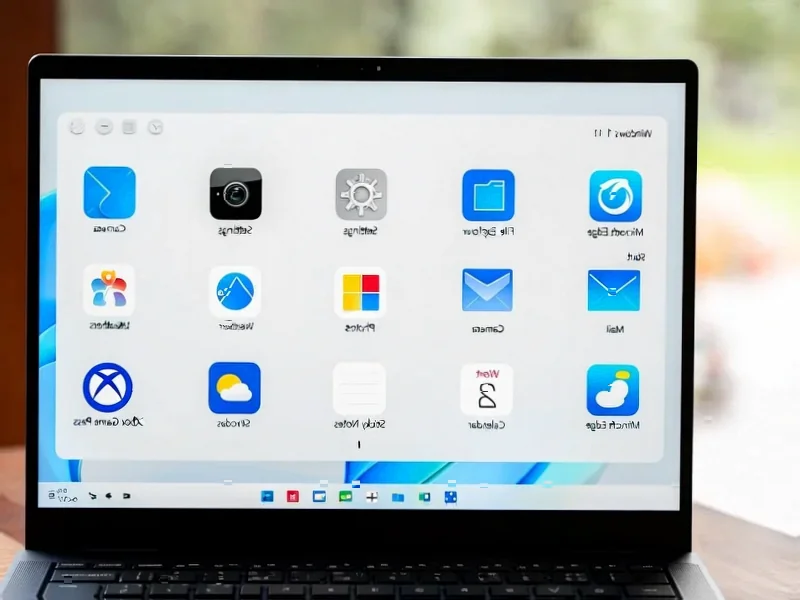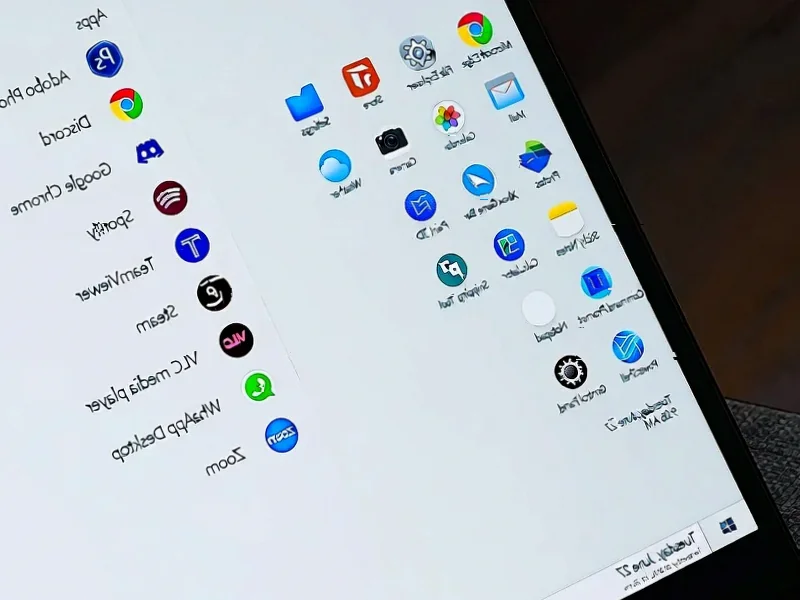According to Digital Trends, Microsoft is expanding Windows 11’s full screen gaming experience to more handheld devices after initially launching it on the ASUS ROG Ally and Ally X. The preview began rolling out to MSI Claw models on October 31, with more manufacturers expected to follow in the coming months. Users can enable the feature through Settings under Gaming and Full screen experience, then select Xbox as their home app for a controller-first launcher that minimizes distractions while gaming. The mode can be accessed via Task View or Game Bar, or set to launch automatically at startup, creating a console-like interface that transforms Windows handhelds from miniature PCs into dedicated gaming devices. This expansion represents Microsoft’s continued effort to bridge the gap between Windows and Xbox gaming experiences.
The Bigger Strategic Picture
This move represents far more than just a user interface update—it’s Microsoft’s clearest signal yet about the future of its gaming strategy. By bringing the Xbox experience to Windows handhelds, Microsoft is effectively creating a new hardware category without needing to manufacture the devices themselves. This follows their broader “Xbox everywhere” philosophy that we’ve seen with cloud gaming and Game Pass, but takes it a step further by embedding the Xbox ecosystem directly into third-party hardware. The timing is particularly strategic given the growing handheld market dominated by Steam Deck, with Microsoft essentially creating an Xbox handheld through software rather than competing directly with hardware.
What This Means for Game Developers
For developers, this creates both opportunities and challenges. The consistent interface across different handheld devices means developers can target a standardized gaming environment rather than worrying about multiple launchers and storefronts. This could potentially streamline development for the handheld form factor, similar to how console development benefits from standardized hardware. However, it also raises questions about Microsoft’s relationship with Steam and other storefronts. Will games need to be optimized specifically for this Xbox mode? Will Microsoft eventually prioritize Xbox Store titles in this interface? According to the Windows Insider announcement, Microsoft is gathering feedback to shape the experience, suggesting they’re still figuring out the optimal approach.
Potential Market Disruption
The handheld gaming market is about to get much more interesting. While Steam Deck currently dominates the premium handheld space, Microsoft’s software approach could enable multiple hardware partners to compete effectively. We could see a scenario where different manufacturers offer devices at various price points and specifications, all running the same Xbox interface. This mirrors the Android smartphone model rather than the closed console ecosystem. For consumers, this means more choice and potentially faster innovation as hardware manufacturers compete on specs while Microsoft handles the software experience. The key question is whether this fragmented hardware approach can deliver the consistent performance optimization that makes dedicated gaming consoles so appealing.
The Technical Hurdles Ahead
While the concept is compelling, the execution faces significant technical challenges. Windows has always been a compromise for gaming handhelds—powerful but often clunky compared to dedicated gaming interfaces. The success of this initiative will depend on how well Microsoft can optimize Windows for these low-power devices and ensure consistent performance. Battery life management, thermal throttling, and background process management will be critical factors that determine whether this becomes a truly viable alternative to dedicated gaming handhelds. The fact that this is rolling out through the Windows Insider program suggests Microsoft recognizes these challenges and wants real-world testing before a full launch.
Where This Could Lead
Looking forward, this could be the foundation for something much larger. If successful, Microsoft might extend this Xbox interface beyond handhelds to traditional PCs, creating a unified gaming experience across all Windows devices. This could eventually lead to a scenario where Windows boots directly into an Xbox interface for gaming-focused devices, blurring the lines between PC and console even further. For Microsoft’s hardware partners, this represents an opportunity to differentiate their gaming laptops and desktops with a premium Xbox experience. The long-term play might be creating an ecosystem where the hardware matters less than the Microsoft gaming services running on it—a strategy that could fundamentally reshape their position in the gaming industry.




